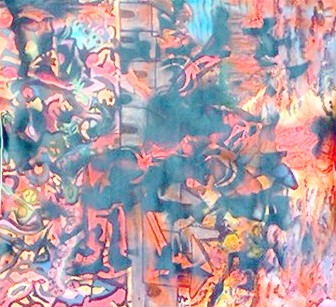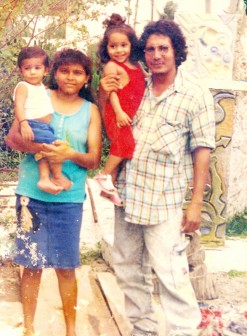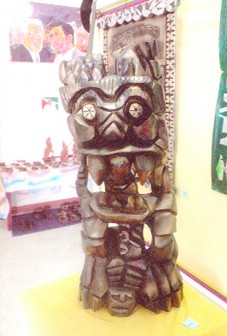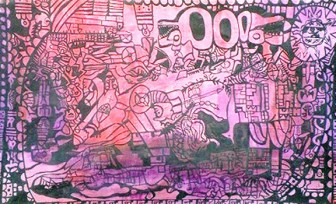Desmond Alli, like most artists, splits his time between his creative pursuits and trying to make a living.
In addition to being a painter and sculptor, Alli has been teaching Spanish privately.
According to him, artists here with graduate qualifications enter the teaching profession or, those with some finance leave the country for greener pastures. The less fortunate ones, he said in a letter, published in the April 27, 2011 edition of Stabroek News, are the self-taught artists who have to so some handy work or become security guards. “Nowhere else are artists treated so shabbily as in Guyana,” he wrote. “It would appear that these men and women endowed with the vision needed to carry this country forward are of no importance!”

In a recent interview, Alli told Stabroek News that he believed that Guyanese need to target the Latin American market, since there is a similarity in art. “Brazil as well as other Latin countries, has a cultural affinity with us, which can aid Guyana at the same time and aid these countries. More so, in Guyana, we don’t have much market for the arts, so it is an exploration for the marketing aspect of Guyanese work, because in Brazil they like Guyanese works,” he said.
Alli, 57, became interested in art when he experienced the first Carifesta, which was hosted in Guyana in 1972. Pieces by sculptor Phillip Moore made an “indelible impression” on him, however, it was when he moved to Brazil at the age of 17 that he found his style. Spending five years in Brazil and two years in Argentina, Peru, Bolivia and other South American countries, Alli studied their history, which is reflected in his work. “Living in Latin America, I became familiar with the history of the country as well as the architecture as well as the culture of the people,” he stated.

Being exposed to the people’s culture, Alli said, he developed an interest in the Pre-Columbian art form. “It is a bit more introspective art,” he noted.
He says his works “at times appear to be incoherent but there is cohesion. What I started to do was reconceptualise things, as it were, using for instance the motifs and trying to re-cultivate history.”
A self-taught artist, Alli’s first serious series was called “Art in Resistance.” He explained that “Resistance art covered a cultural fight-back against European cultural imposition, European art impressions that they made. I was looking to bring back and to resuscitate in the minds of people the pre-Columbian art forms that were here before the Europeans came and imposed their concept of art.”
Alli noted that he does not credit among his influences greats such as Picasso and Michelangelo because there are Europeans. His influences are nameless people whose art managed to survive the Spanish colonists who tried to do away with their art.

While touring, studying and working on his art works, Alli was an itinerant teacher for a bit. He was also a student of Spanish and International Relations at the University of Guyana.
He is now General Secretary of the Guyana United Artists, which he said represents grassroots artists and has grown to cover the performing arts as well. The organisation puts on the GuyArt Fiesta to highlight the works of its members.
However, Alli emphasised that it is the responsibility of the Culture Ministry to ensure that the performing, visual and other arts are preserved and taught in schools.
In his letter, Alli took issue with the lack of financial support for artists, despite a sizeable budgetary allocation. “Being the principal organiser of the visual arts in Georgetown and its outlying areas, I have to constantly interact with artists who are often-times broke.

They don’t have paints, brushes, canvas, chisels and carving sets. Simple sand paper and polish proves to be a problem because the artists just don’t have money and the costs of these items have all gone up astronomically on account of the 16% VAT,” he noted.
He added that securing venues for exhibitions is also a problem, as is finding a market for the work. “On account of this, exhibitions are becoming fewer as the years go by. Surely these activities should be subsidised by the Ministry of Culture as it is intended to develop public awareness of Guyanese culture,” he said.





